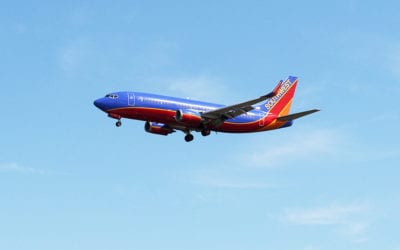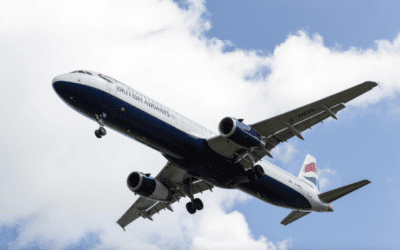Visit NBCNews.com for breaking news, world news, and news about the economy
Beginning in November 2016 all new motorcoaches and some other large buses will be required to be equipped with three-point lap-shoulder belts according to new rules released by the National Highway Traffic Safety Administration.
This isn’t a new story, but it does raise questions about federal regulations and their costs to implement and to formulate. The final impact of this new rule will save an estimated “one to 10 lives per year.” Traveling by bus is already one of the safest forms of transportation in the country. Operators are vetted and safety standards are maintained.
Bloggers have questioned the value of these new bus regulations.
One of the safest forms of travel is by long distance motorcoach. There are about 29,000 coaches in the US, and they transport about 700 million passengers a year, with an average of 21 people killed in crashes. Though the bus industry safety record is laudable, safety groups have continued their campaign for seat belts for more than four decades.
Is this ridiculous or sensible? It will cost about $3,000 per new coach to add seat belts, and so after a bit of juggling of numbers, that looks to be about $350,000 per life saved (even less if you factor in the reduced injury cost).
On the other hand, regulation may not have been necessary. It seems that the industry has already been modifying buses, probably because of insurance concerns. This makes the new rule even more difficult to explain and virtually unnecessary. Plus, the future enforcement date of November 2016 means even more time until all long-distance buses have seat belts.
… the highway coach industry is not waiting around for legislation — up to 80 percent of new coaches now have seatbelts installed. Unfortunately, given the long lifecycle of a highway coach — as much as fifteen to twenty years — it will be a while before all of them have seatbelts.
But, let’s look at the buses that are excluded from the new rules. School buses are excluded because of “a concept called compartmentalization.” City buses are also excluded.
In compartmentalization, the seats on the school bus are placed very close to each other and have high backs that are very padded. As a result, in an accident the student would be propelled forward a very short distance into a padded seatback that in a way is like an early version of an airbag. In addition, the fact that people sit high off the ground in school buses also adds to the safety, as the impact location with an automobile would occur beneath the seats.
City buses have a different function and there has been little clamor for seat belts for those types of buses.
From a practical perspective, there seems to be little need for seatbelts on city buses. Although the design of the modern low-floor city bus is less safe than the design of school and highway buses, the fact that city buses rarely travel at speeds greater than 35 mph means that any collision is likely to be minor. Also, given that most trips on city buses are short and that many trips have standing passengers , the presence of seatbelts will make even less of a difference.
The new regulations will take up plenty of pages in the federal register and will provide the bureaucracy a job to check up on the industry; however, in both the long and short run, the effect of the new regulation will be minimal since the industry has already committed to adding seat belts to their new fleets. Eighty percent of the problem has already been handled before the National Highway Traffic Safety Administration rules were announced and the rest of the new buses should be equipped prior to November 2016.

Charlie Leocha is the President of Travelers United. He has been working in Washington, DC, for the past 14 years with Congress, the Department of Transportation, and industry stakeholders on travel issues. He was the first consumer representative to the Advisory Committee for Aviation Consumer Protections appointed by the Secretary of Transportation from 2012 through 2018.



